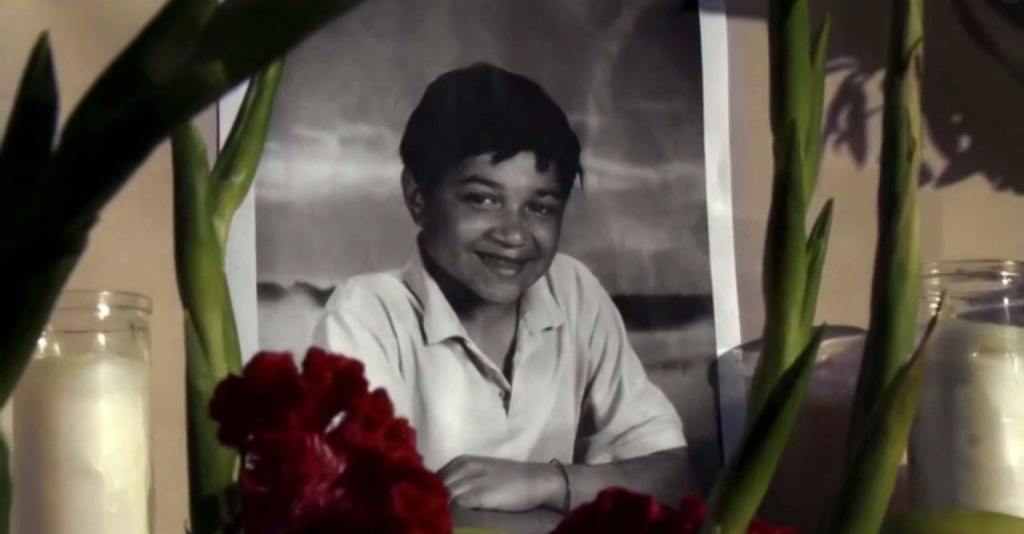
Produced with support from our JustFilms program, Valentine Road explores the murder of a teenager who had begun exploring his gender identity, revealing the circumstances that led to a shocking crime, as well as its complicated aftermath. The film raises issues about the safety of LGBT teens, juvenile justice, and the ability of the country’s educational and social service systems to prevent such tragedies. And it looks beyond the basic outline of a tragic event to tell the stories of two victims: Larry King, the boy who was killed; and Brandon McInerney, the boy who pulled the trigger.
Luna Yasui, program officer for Advancing LGBT Rights, provided support for the documentary in collaboration with JustFilms. She took some time to talk about why the film resonates, the particular challenges facing LGBT youth, and the difficulty of achieving justice in a broken system.
“Valentine Road” is available for streaming from HBO. Educators and students may be eligible for free online access to the film through our grantee GLSEN (Gay, Lesbian and Straight Education Network), as well as resources and discussion guides to provoke meaningful discussion.
What drew you to this film, and how is it important to your work on LGBT rights?
We’re trying to create an informed and compassionate public discourse around a range of LGBT issues. Lately the conversation has been dominated in large part by marriage equality—and that’s absolutely important, we support that work. But LGBT people deal with lots of other issues.
“Valentine Road” illuminates the number of public and cultural institutions that shape a young queer person’s life. It speaks directly to the importance of having meaningful, safe access to social services, to foster care, to justice and education—all things young people rely on. It gets to the heart of issues like gender, race, youth sexuality and religion, and offers people multiple entry points into a larger conversation.
Larry represents what is in some ways one of the most vulnerable voices in the movement: a young boy of color who was feminine in his gender presentation. The amount of fear, misunderstanding and hatred that his gender expression stokes was very personal to me. At the same time, [Director] Marta Cunningham has also made this a story about Brandon and the values and institutions that have both affirmed and failed him in various ways. Marta’s ability to embrace these multiple perspectives allows us to see how we are all implicated in Larry’s story and memory.
What are some of the systemic problems that helped enable both parts of this tragedy?
Nobody is born culturally or professionally competent in serving every single kind of student. Teachers and administrators, even those with the best of intentions, need guidance. In the film we see teachers who are incredibly supportive of Larry, and others who believe he’s going to burn in hell. How do you create an environment where those teachers are talking to each other, and also where there are institutional supports for students, so they don’t have the burden of figuring out which adults are safe to talk to?
Larry was surrounded by friends who loved him and thought the world of him. It’s so important to nurture that kind of peer space, whether through Gay-Straight Alliances (GSAs) or other forms of support and organizing that can play a life-saving function in young peoples lives. We’ve got to equip schools with the means to support students, and instill a culture where the adults are invested in and feel responsible for their wellbeing. Grantees like GSA Network, the ACLU and GLSEN are working with schools and administrators to give them the tools they need to serve all students. GLSEN actually partnered with HBO to create a viewing guide that helps both students and adults talk about some of the difficult issues raised by “Valentine Road.”
On the flip side, this film reveals so much about a troubled criminal justice system that is rife with racism and has no demonstrable ability to address the root cause of bias-motivated violence. One of the most powerful messages here is the need to transform our criminal justice system so it can serve a more restorative function for people like Brandon, and communities impacted by his actions.
There’s been some important progress for LGBT youth in schools over the past decade, but a lot remains to be done. What kind of efforts is your initiative supporting?
We’re thinking about different ways to support strong institutions that are responsive to the needs of LGBT youth. GSAs have been in schools for long enough that it’s clear they create a ripple effect, fostering a safe climate for LGBT young people and a more positive learning environment for all students. It’s notable that they don’t remain uncontested: It’s still an act of courage for teachers to support a GSA and for young people to be a part of one. We support the GSA Network and safe schools movements, as well as broader educational equity efforts that challenge what’s known as the “school to prisons pipeline”—because what happens to kids in schools has a huge impact on the shape of the rest of their lives.
The same harsh discipline and zero tolerance policies that have a disproportionate impact on African American students have been shown to have a disproportionate impact on LGBT youth—because these are young people who are also viewed as disrupters in the classroom. The treatment of LGBT students has enormous implications for how we understand gender roles and how we protect freedom of expression. There are important conversations to be had in schools about that. The GSA Network has been instrumental in elevating queer youth leadership as part of a national effort to end harsh school discipline policies.
There have been many notable and very public victories when it comes to marriage equality, but persistent challenges when it comes to other issues of LGBT rights. How does that tension manifest in this work?
That’s a question the movement has been grappling with in a number of areas. At the federal level and in some key states, we’re seeing steady gains in legal equality. And those are critical and baseline measures of equality. But we need those victories to translate into a lived experience, where anyone can live a life of joy and safety, and not feel vulnerable because of their sexual orientation or gender identity. That requires a different kind of culture change and community building, and we’re not there yet.
As we’ve made undeniable progress on marriage—and this is documented in a recent report by one of our grantees, the Movement Advancement Project—we’re not making progress on much else. As a community of advocates, policymakers, storytellers and funders, we need to remember and embrace that marriage is one, but not the only issue for LGBT people. Our mandate in the next phase is to amplify efforts that address the full interests and potential of our movement.
